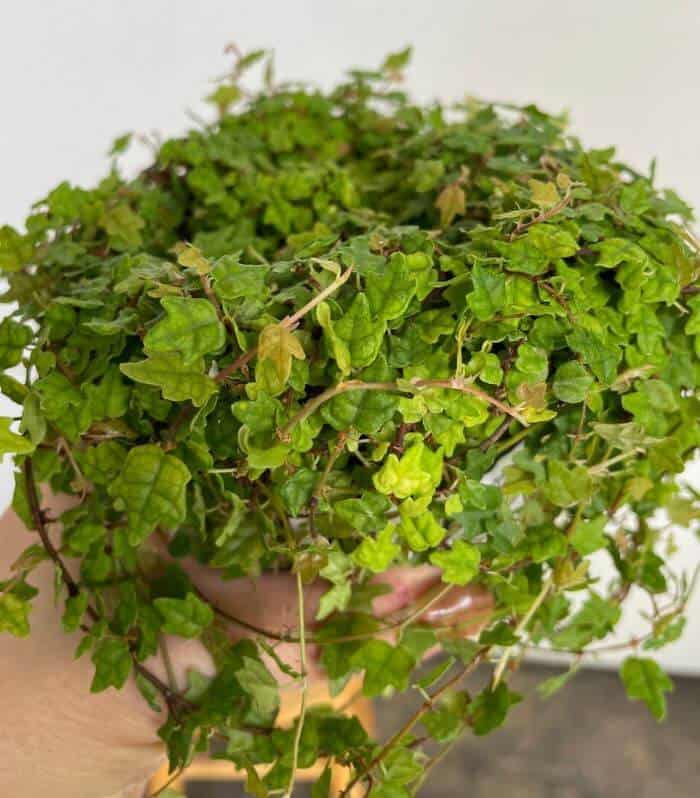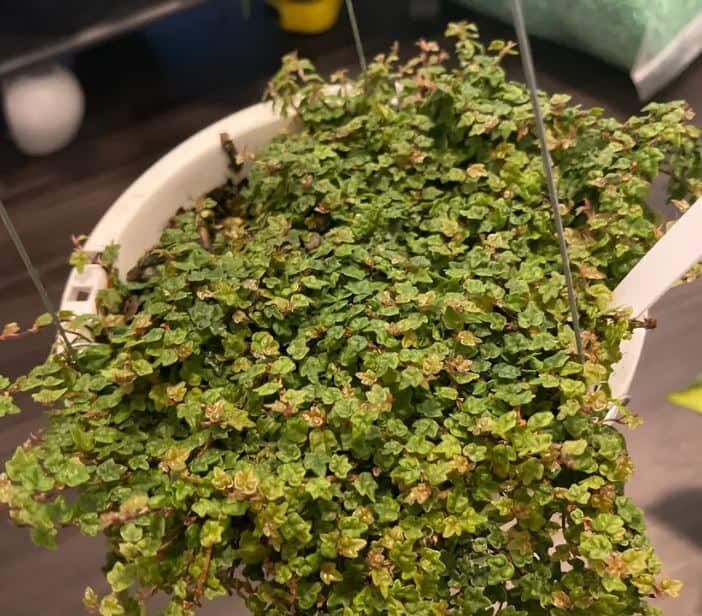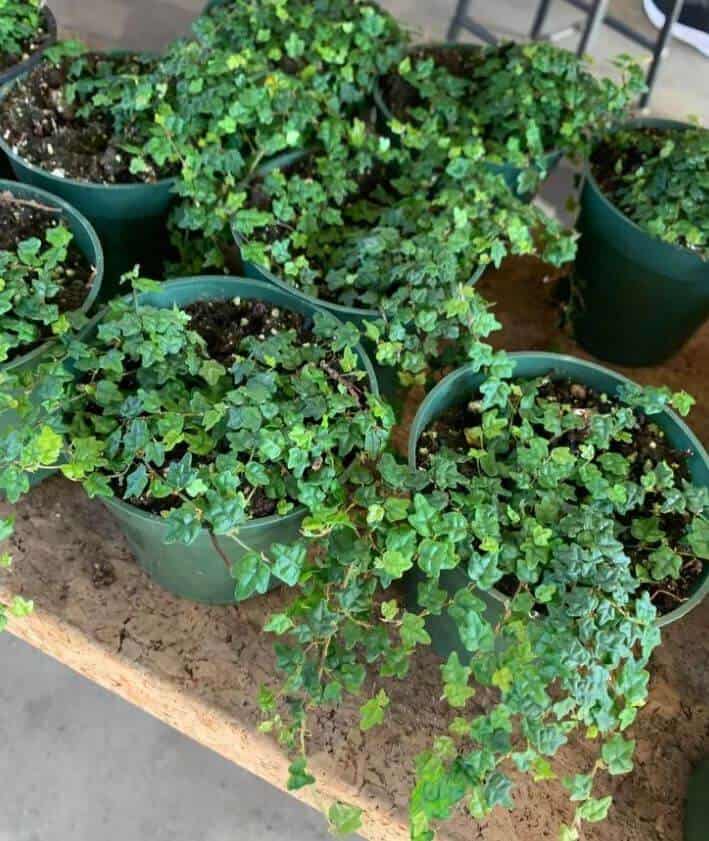Last Updated on January 6, 2023 by a Friendly Gardener
The String of Frogs plant belongs to the Ficus genus. Botanically termed Ficus pumila ‘Quercifolia’, this plant is a dwarf variety that has extremely tiny leaves. These leaves are further asymmetrical and green and tend to creep close to the ground, which is why the plant is commonly called String of Frogs.
It is possible to grow or obtain this plant for your home, although it is crucial for you to take good care of it to make sure that it appears and remains healthy and full of vitality.
There are several important aspects you should be aware of in this regard, some of which you can learn about here.
Propagation and Growth

If you want to plant String of Frogs on your own, you can carry this out using seeds, leaf pieces, or stem cuttings. Either of these can work well enough, although the method involving stem cuttings might be the quickest and most convenient option, whereas the seeds can take the slowest to germinate and grow.
Either way, you should follow a proper system of planting these. The steps involved are stated below. Skip to the third step for leaf cuttings and the fourth step for stem cuttings.
- If you are using seeds, make sure you obtain the right ones of good quality from a nursery or online store.
- Keep them in some water for a few hours, and then take a pot filled with enough soil to sow these seeds.
- If you are using leaf cuttings, simply cut a leaf from a mature plant, cut the stalk, and then sow the leaf into the potting soil.
- For stem cuttings, make sure the leaves from the stem are not a part of the structure. Immerse the stem into a rooting hormone to quicken the rooting process and then sow the cutting into the potting soil.
- Now that you have the pot ready, you can place it in a suitable location where there is enough brightness.
You can now start caring for the plant properly using the conditions described in the following section.
String of Frogs Plant Care

The String of Frog plant is quite simple to care for, resulting in an overall hassle-free experience. In most cases, as long as you provide a good spot for the pot, you should be okay, while in others, you might need to put in a bit more effort.
Here are the care conditions that you should follow and stick to throughout the growing process of this plant. However, remember to tweak a few of them based on the conditions surrounding the plant.
Sunlight
The String of Frogs plant typically thrives when the light is bright. However, you should ensure filtered access to this sunlight so that the leaves do not end up scorching and shriveling.
A nice windowsill or balcony where the temperatures can remain between 70℉ and 80℉ can be ideal for this plant. USDA zones 9-11 usually work well here.
Container
You are free to use most kinds of containers for this particular plant as long as it is accommodating enough for the roots. The container or pot should also come with a hole or two at the bottom so that any extra water can leave the pot instead of pooling in the soil.
You might need a bigger container once the plant starts going beyond a certain size.
Soil
The soil that you use for this plant can be any good potting mix from the store. All you need to do then is add some sand, moss, perlite, or peat to ensure that it becomes looser. This is a good way to make it capable of draining out excess water.
Try avoiding alkaline and acidic pH levels.
Watering Routine
It can help to water the plant thoroughly every week or even every ten days or so. The amount of water you provide can vary at times, so a general measure you can follow is to inspect whether or not the soil is almost entirely dry. Water the soil only if it is.
During the dormancy period in winter, you should minimize watering.
Fertilizing
Fertilizing is not exactly something you absolutely should do for this plant, especially since the soil should contain several nutrients already. However, you can provide a mild fertilizer in a small quantity at the beginning of the growing season.
Humidity
Try relying on your watering routine to provide moisture and humidity to this plant. Beyond this, the natural air should be enough to provide a bit more humidity. In case you live in a hot and arid climate, you might need to use a humidifier or nearby steam to provide some additional moisture.
Pruning

This plant, given its creeping nature, can grow fairly quickly. For this reason, it can be a smart decision to prune some of the older leaves and branches so that the plant can provide some neatness to your room.
Toxicity
Plants belonging to the Ficus genus are usually quite toxic to your pets as well as to infants, so make sure you keep these plants at a certain height or distance. You should also exercise caution while handling these plants, so try wearing gloves when you need to touch them and wash your hands later on.
Pests and Diseases
Scales, mites, aphids, and mealybugs can sometimes affect this plant, especially if the care conditions are not up to the mark. You might need to repot this plant if the damage is done while also spraying some oils and insecticides to keep these pests away.
Diseases like fungal rots are likely to occur through overwatering.
Parting Remarks

The String of Frogs plant is a lovely creeping plant that can add some freshness and beauty to your room, especially if you let the leaf strings hang freely. Once you manage to propagate or obtain the plant, you should ensure that you provide it with partial sunlight, regular watering, and healthy soil.
Remember to ensure safety while dealing with this plant, since its sap can be a bit toxic.

